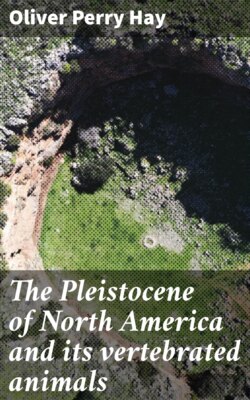Читать книгу The Pleistocene of North America and its vertebrated animals - Oliver Perry Hay - Страница 36
На сайте Литреса книга снята с продажи.
NORTH CAROLINA.
ОглавлениеTable of Contents
16. Kitty Hawk, Currituck County.—In the Marsh collection of fossils belonging to Yale University is a part of a skull found somewhere near Kitty Hawk. No particulars regarding the exact place of discovery accompany the specimen. It has already been described on page 27; and, while there are some differences between it and the recent skulls used for comparison, it is not believed that a distinct species is indicated.
According to L. W. Stephenson’s map of the Coastal Plain of North Carolina (North Carolina Geol. and Econom. Surv., vol. III, plate XIII), the coast at Kitty Hawk and for about 50 miles back of this is occupied by the Pamlico formation. This corresponds to the upper part of the Talbot of Maryland, and it, or part of it, may have been deposited at the close of the Pleistocene. So far as the present writer knows, there is nothing to show the character of the climate then prevailing. As this Pamlico nowhere rises more than 25 feet above sea-level, and as the thickness is usually only from 15 to 20 feet, it is possible that the walrus skull found at Kitty Hawk had been unearthed by the waves from the Chowan formation or some still earlier deposit.
